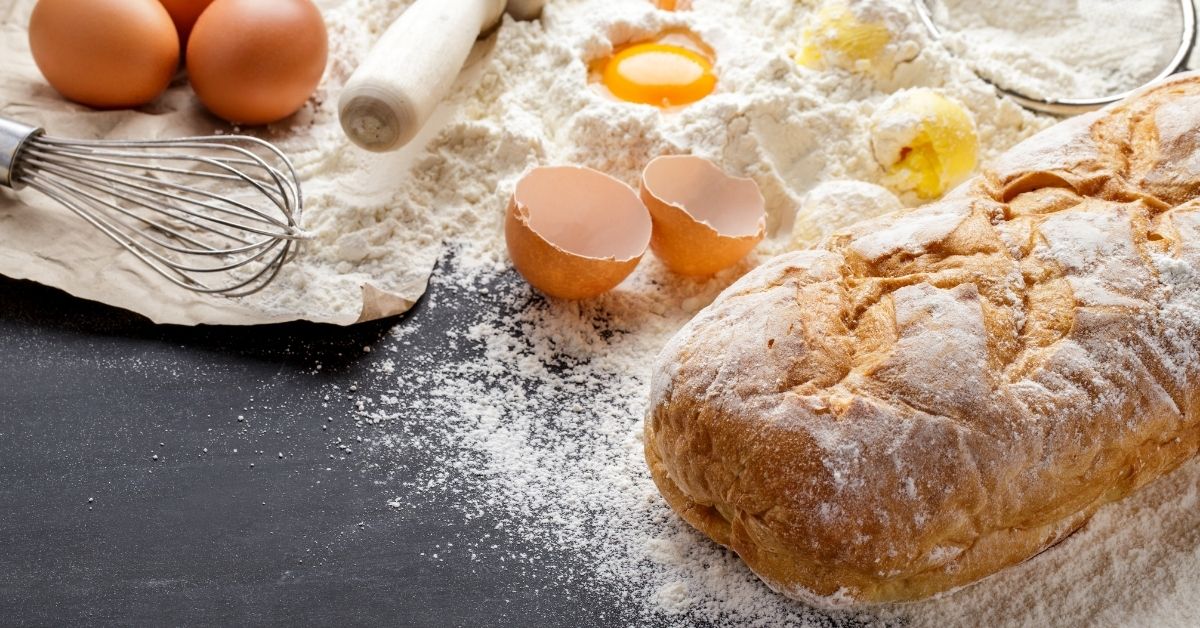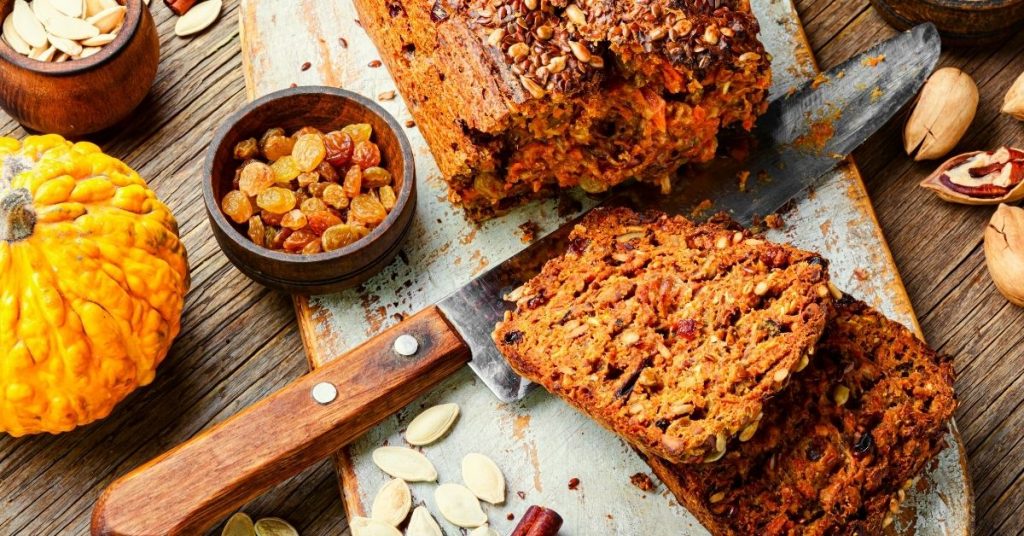How Much to Charge for Homemade Bread?

Homemade bread is one of the tastiest culinary experiences. Not only that it is softer and more flavorful than store-bought bread, but the experience making it and the smell filling up your home while baking it are irreplaceable memories. The homemade bread gives you the luxury of having it straight from the oven and starting a business with it could be a great investment. So, how much to charge for homemade bread?
The cost of making one pound of regular bread is about $1.8, so you should charge it at least $3.6. To determine the selling price of homemade bread, you should multiply the cost of making it by 2. However, if you sell bread that is harder to make, pricier, and takes more time, you should multiply the cost by 3 to determine the selling price.
Bread-making is my passion, as I come from a long line of bakers. Bread-making sustained my family for a long time; therefore, I have some valuable information to share. In the following paragraphs, I will explain the cost and profit of bread-making and how to get the right price for your efforts.
How Much Does Homemade Bread Cost to Make?
The cost of homemade bread is approximately two times lower than its store-bought counterpart. Still, this difference could be even more significant depending on the store and brand.
The cost for one one-pound loaf of regular homemade bread containing white flour, yeast, oil, and salt would be about $1.80. The more ingredients you add, the higher the cost will be.
The type of bread is also a decisive factor, as some types of bread, although made with fewer ingredients, cost more as those ingredients are more expensive.
The focaccia recipe requires quite a bit of olive oil, which increases the cost. For example, a pound for focaccia costs $2.50 to make. Another factor contributing to the cost is that the focaccia bread doesn’t rise much, so you will need over a pound of flour to make a pound of focaccia bread.
Although it is a dairy-free bread, it is common for focaccia to include some cheesy topping. The price would also go up if you decide to add toppings to the bread.
One pound of brioche can cost up to $5 to make at home. Milky and sweet, homemade brioche can be pretty pricey. It contains a lot of butter and eggs, which significantly increases the cost.
The cost for homemade rye bread is about $2. It essentially contains the same ingredients as regular white flour bread, but the flour in rye bread is rye flour. Rye flour is a little more expensive than regular flour because it contains more grains, whereas white flour contains only wheat grains.
The cost of making ciabatta is pretty the same as regular white bread, i.e., $1.80. Similar to regular white bread, what makes ciabatta bread special is its alveolar holes inside. The ingredients in ciabatta are the same as in regular white bread, but the kneading technique is different.
Irish soda bread costs about $2.5 to make at home. It usually contains everything as regular bread, plus soda and buttermilk. The soda causes negligible cost increase, but the buttermilk’s contribution to the cost is more noticeable.
To make challah bread would cost you about $3.50. Store-bought challah bread costs from $15 up, not because it contains expensive ingredients, but because its making procedure is specific. It is also a traditional Jewish bread eaten on special occasions, increasing its market price.
Other than eggs, all its ingredients are the same as in regular white bread.
Pumpernickel bread is a heavy and dense bread, the cost of which would be about $4 to make at home. It doesn’t contain many ingredients, but it does include several types of flour.
Pita bread is very easy and cheap to make at home. For only $1, you will have five pita bread pieces, which is about half a pound. So it would cost about $2 to make a pound of pita bread at home.
Pita bread has the same ingredients as regular bread, but the making procedure is different. Since pita bread is usually fried, the main expense would be the oil. However, pita bread is delicious when baked, meaning that you can easily cut the oil cost.
Very similar to pita bread, naan bread is also cheap to make at home. It also costs $2 for a pound of naan bread.
Sprouted bread is very similar to pumpernickel and rye bread, and it costs about $2 for a pound of homemade sprouted bread.
The referred amounts are standard amounts based on the market prices in Western Europe and the USA and the online markets. However, the value will be the same regardless of the country, and the price: cost ratio is the same.
| Type of bread | Cost to make at home (one pound) |
|---|---|
| Regular white bread | $1.80 |
| Focaccia | $2.50 |
| Brioche | $5 |
| Rye bread | $2 |
| Ciabatta | $1.80 |
| Irish soda bread | $2.5 |
| Challah | $3.50 |
| Pumpernickel | $4 |
| Pita bread | $2 |
| Naan bread | $2 |
| Sprouted bread | $2 |
How Much Should You Charge for a Homemade Bread?
Deciding on how much you should charge for a homemade bread depends on ingredients, time, and effort. Kneading isn’t a simple task, so even if a type of bread contains cheap ingredients, such as challah bread, but requires time and technique, you should set a bigger profit margin.
The rule says that you should multiply the cost to make the bread by five to render the selling price for bread. However, since this is homemade bread, you can alter this rule and set a lower profit margin because your expenses won’t be that big.
If making the bread doesn’t take up much time and doesn’t require any special skills, I’d suggest you double the cost for making it to obtain the right selling price. If, on the other hand, you need more time and effort to make the bread, you should triple the cost of making it to get the right selling price.
If you have special requirements from your client, such as the bread’s shape that requires you to purchase a special mold, you should increase the price accordingly. These requirements usually add half the cost for making.
In terms of numbers, if the cost for you to make a pond of regular white bread is $1.80, then you should sell it for $3.6. If your customer requests the bread to be star-shaped, and you need to buy a suitable mold, you add an extra $0.9 to the price, making it $4.5.
Another thing to consider is the quantity. The price doesn’t go up proportionally with the amount. As with every business here, bulk orders always come a bit cheaper.
I’d recommend multiplying the amount per pound by the number of pounds for up to five pounds. From five pounds up, reduce the price for two dollars for each next pound. So if you should charge $75 for five pounds, reduce the price to $ 73, or for six pounds, reduce the price for four dollars, and so on.
| Type of bread | Slice | Half a pound | Pound | Two pounds | Five pounds |
|---|---|---|---|---|---|
| Regular white bread | $0.3 | $1.8 | $3.6 | $7.2 | $17 |
| Focaccia | $0.41 | $2.5 | $5 | $10 | $22 |
| Brioche | $1.25 | $7.5 | $15 | $30 | $73 |
| Rye bread | $0.33 | $2 | $4 | $8 | $18 |
| Ciabatta | $0.41 | $2.5 | $5 | $10 | $23 |
| Irish soda bread | $0.33 | $2 | $4 | $8 | $38 |
| Challah | $0.83 | $5 | $10 | $20 | $48 |
| Pumpernickel | $0.66 | $4 | $8 | $16 | $38 |
| Pita bread | $0.33 | $2 | $4 | $8 | $18 |
| Naan bread | $0.33 | $2 | $4 | $8 | $18 |
| Sprouted bread | $0.41 | $2.5 | $5 | $10 | $23 |
How Much To Charge for a Homemade Sourdough Bread?
Generally, the cost of making a pound of sourdough bread is $2.78. Since it isn’t difficult to make, and it doesn’t cost much more than regular white bread, you should sell this bread for $5.55.
Sourdough bread includes pretty much the basic bread-making ingredients. The only additional ingredient that sourdough bread contains and regular white bread lacks is lactic acid.
How Much to Charge for a Homemade Pumpkin Bread?
Usually, making pumpkin bread at home shouldn’t set you back more than $3 or $4, and you should sell it for $6 to $8. There are quite a few variations to the pumpkin bread recipe, the only constant of which is the pumpkin. Some recipes include using ready-made, milk-soaked bread mixed with the pumpkin mash.
Still, regardless of the recipe, the making price shouldn’t vary more than $1 – $2. A similar price should be for homemade banana bread, too.

What Is the Average Price of Bread?
The average price of bread is about $2.50. Because this price refers to mass-produced bread, here applies the rule the price doesn’t go proportionally up with the amount of bread sold and produced.
Therefore, homemade regular white bread costs a bit more per pound than store-bought white bread. Also, regular white bread is considered one of the main food products; therefore, its market price is legally frozen to be lower than the other bread types.
In the case of other types of bread, their market prices are lower than the prices of the same homemade types of bread.
Is Bread Making Profitable?
Bread-making, and baking in general, is real science. It can be profitable, but it takes much effort, time, devotion, and great skills.
If you are contemplating starting a bread-making business, you could be heading in the right direction, but you must be wary of the legal and sanitary requirements.
As bread is something everyone consumes, and it is the most consumed food in the US, it is subject to rigorous controls, inspections, and penalties. Therefore, if you are interested in starting this kind of business, you need to be well-prepared.
Can You Sell Bread at the Farmers’ Market?
You can sell bread at the farmers’ market. The farmers’ market is where artisans come and sell their products.
You can buy all sorts of things there, from cheese to sauces, to different types of bread. However, the farmers’ market sellers are also subject to control. So if you intend to sell homemade bread at the farmers’ market, you should get the proper certifications for your product and pay attention to proper packaging and transport.
Can You Sell Homemade Bread From Home?
Nowadays, you can sell homemade bread online and from the comfort of your own home. However, you need to comply with the local legal and sanitary requirements.
Selling homemade bread from home isn’t the same as baking it for your family and friends, so you need to obtain the proper licenses and equipment.
